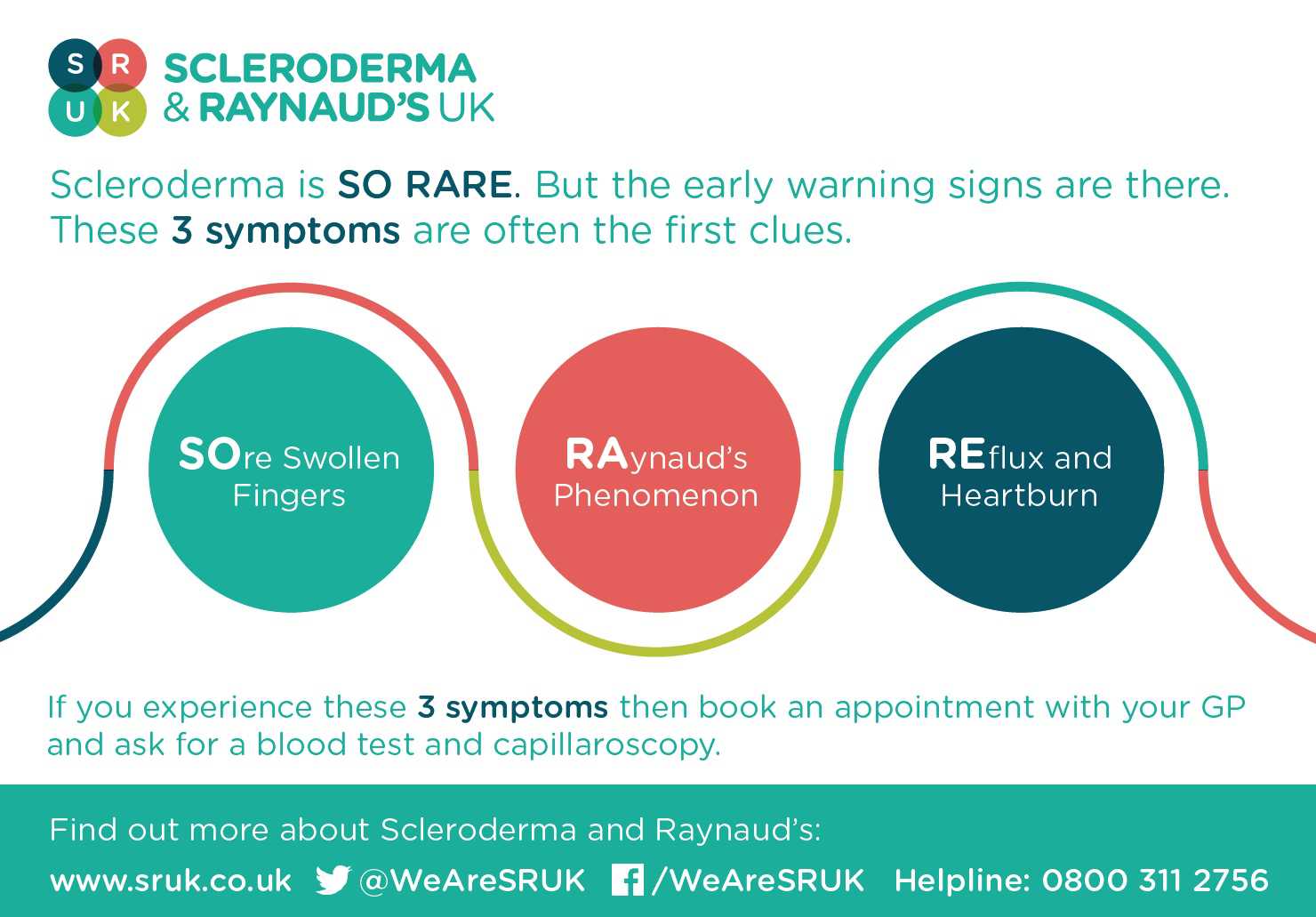The link between Raynaud's and Scleroderma
Most people diagnosed with Raynaud's will not develop scleroderma, which only affects 0.1% of everyone who has Raynaud's. This is because the majority of people who are living with Raynaud's will have the primary form, with symptoms of cold hands and feet and painful attacks with changes in temperature. In primary Raynaud's however, there is no link to any other disease, including scleroderma.
Secondary Raynaud's can be a sign of scleroderma, and is caused by another, potentially serious health condition, including lupus or vasculitis as well as scleroderma. It is often the first noticeable sign of scleroderma, for example 95% of people diagnosed reported that Raynaud's was their first symptom. If you do have Raynauds, it is important to get tested to establish whether you have the primary or secondary form, and this can be arranged by your doctor.
Although we often talk about people with scleroderma having 'Raynaud's symptoms', primary and secondary Raynaud's are actually very different, with important distinctions in the disease processes of each condition.

How Raynaud's is different for people with scleroderma
Unlike primary Raynaud's phenomenon where the blood vessels narrow and then return to normal size, in cases of scleroderma, the small blood vessels in the skin gradually change in size, becoming increasingly smaller and sometimes even disappearing over time.
Blood vessels lose the ability to return to their normal size in between attacks, and this reduces the supply of oxygen and nutrients to the skin. If the skin does not receive enough nutrients, it can become dry and cracked, and small ulcers sometimes form on the tips of the fingers or thumbs, with gangrene developing in severe cases.
In people with scleroderma, problems with the blood vessels can spread into other parts of the body and internal organs.This never happens in primary Raynaud's. So although the effects on the fingers and toes initially appear to be the same, the ways in which the two conditions develop are very different.
What should I do if I have symptoms of scleroderma?
The three main symptoms of scleroderma are swollen fingers, Raynaud's phenomenon and reflux or heartburn. Early diagnosis is important to help prevent the disease from progressing further, as scleroderma can be fatal. The first step is to see your GP as soon as possible to talk about your symptoms and ask to be referred for further testing.
